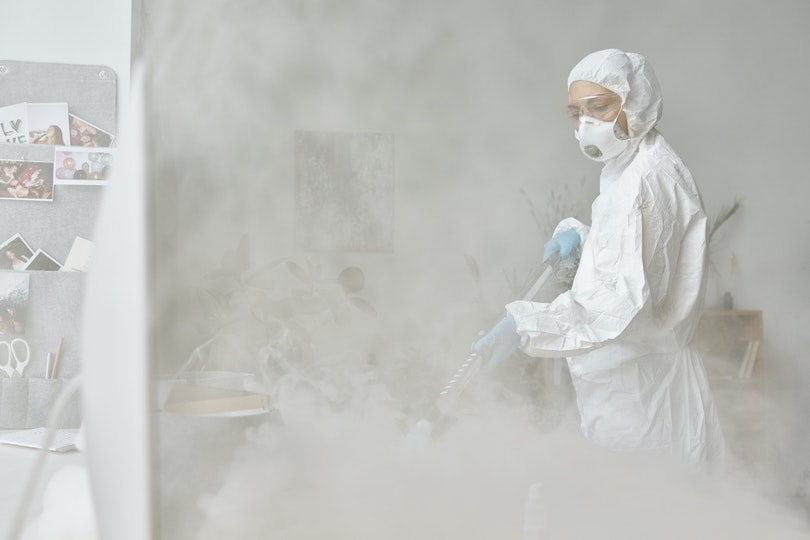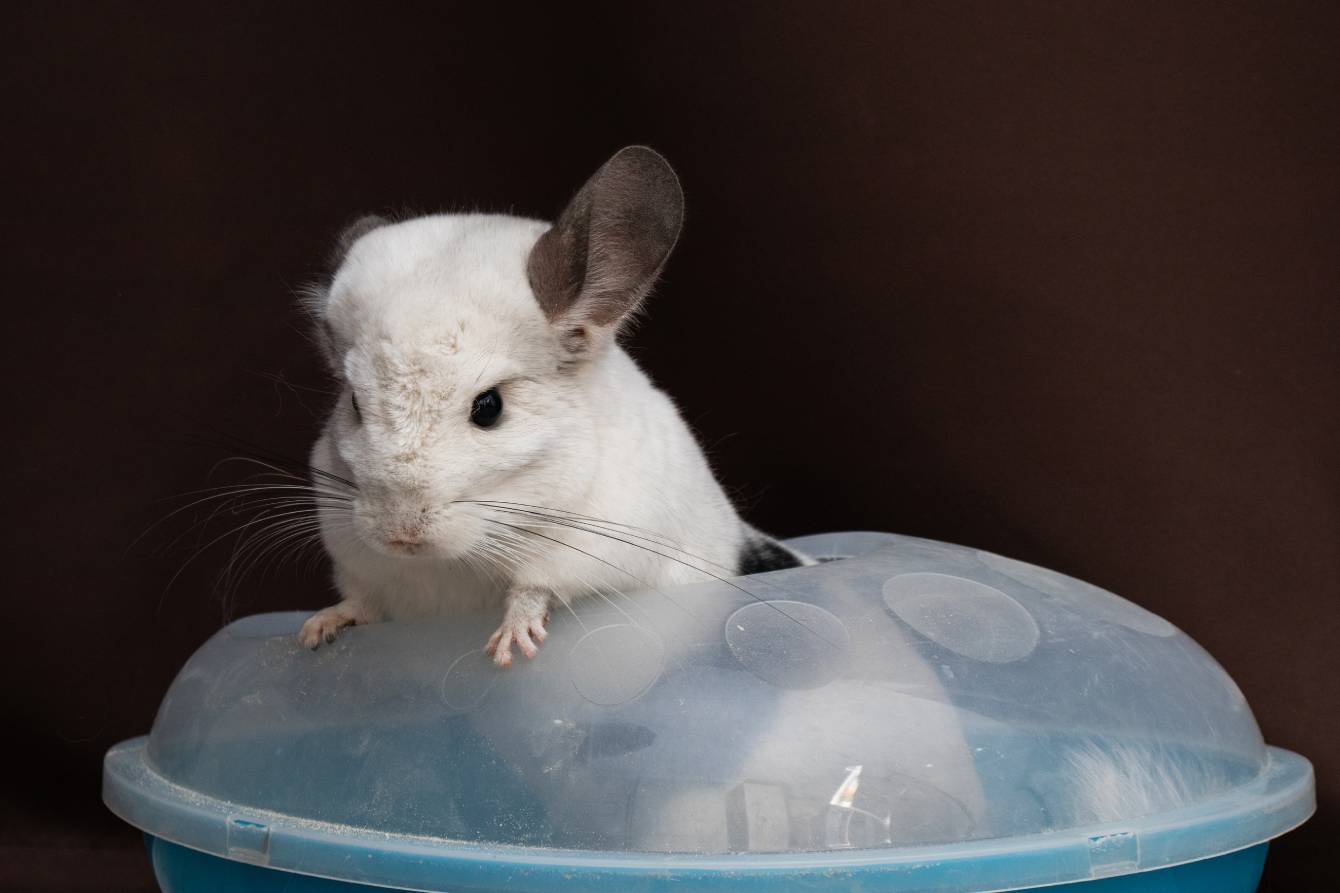VET APPROVED

The information is current and up-to-date in accordance with the latest veterinarian research.
Learn more »Click to Skip Ahead
Fleas can quickly cause your house to be an unwelcome place. These irritating pests can make you and your cat miserable, and the problem will only worsen without treatment. It is possible to reduce flea populations with flea bombs, but their effectiveness depends on the severity of the infestation and the size of your house. For example, a single bomb won’t solve your pest problem unless you live in a one-room apartment. Still, if it’s an option that you’re pursuing, read on to learn how to best use flea bombs if you have indoor cats, to ensure that they won’t be negatively affected by the chemicals.

Before You Get Started
Several chemicals can be used in flea bombs, or foggers, to kill fleas, but the most effective ones contain pyriproxyfen or methoprene to kill adults and eggs. Despite these chemicals being harmful to felines, if the product is used correctly and the residue is removed thoroughly, your cat won’t be affected. Although some foggers claim to be pet-safe, it’s still a good idea to remove your cat and family before using one.
Preparation
The first step in flea bombing is to find somewhere else to stay while the bomb is detonated. The fumes released by the bomb can be harmful to both humans and animals, so it’s important to minimize exposure. Pet hotels, vet clinics, or kennels may be your only option if your house is bombed and you can’t keep your cat somewhere else. Felines are not allowed in most hotels, even those that allow pets.
Once you’ve found a safe place to wait out the bombing, it’s time to get started. Before you use a fogger, make sure your gas and pilot lights are off because these bombs may emit flammable particles.
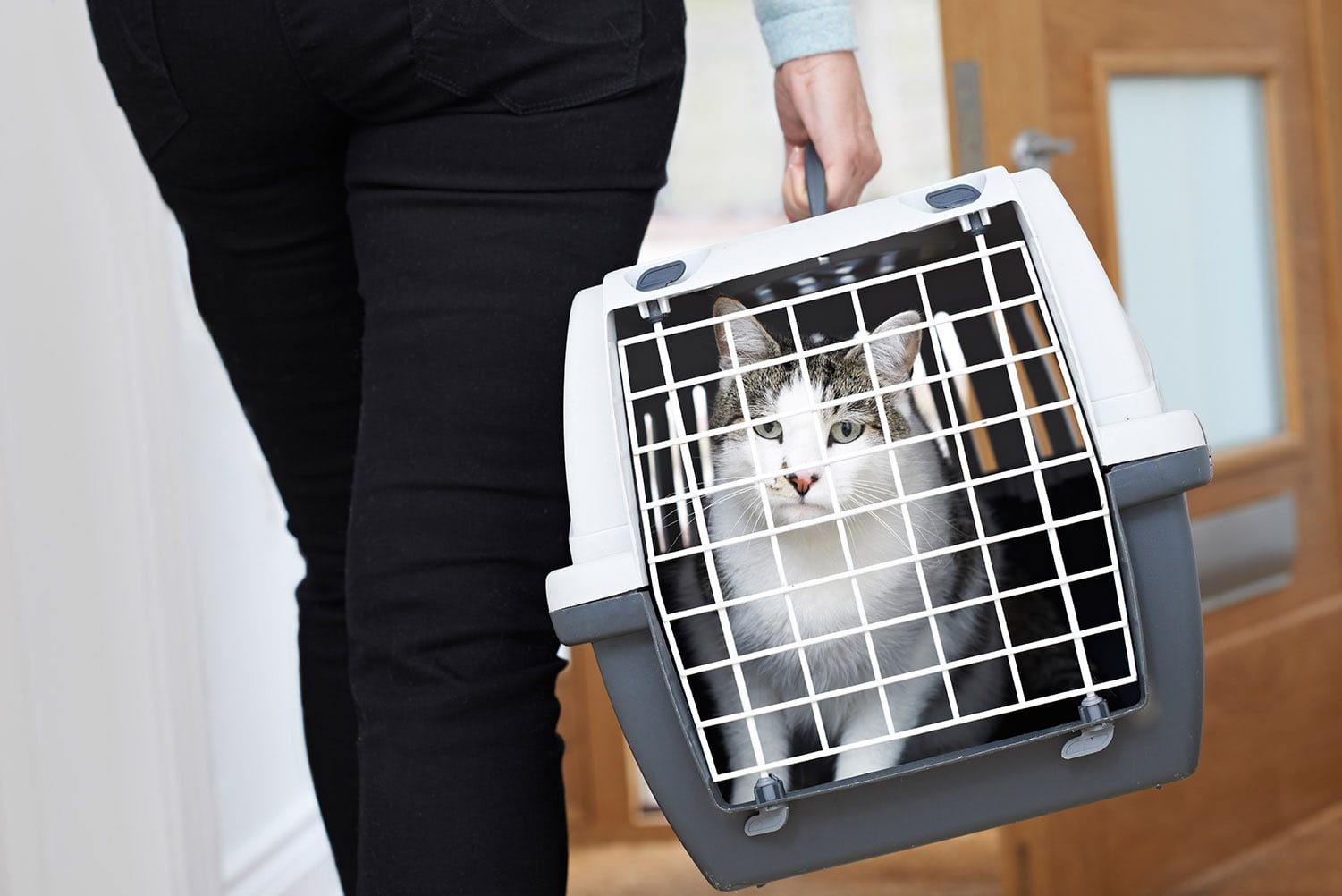
Materials
To begin, you’ll need to purchase a flea bomb from your local hardware store. You’ll also need to take proper precautions to protect your cats and yourself. Assemble materials like masks, plastic sheeting, goggles, duct tape, and gloves.

Top 5 Tips to Flea Bomb With Indoor Cats
1. Treat Your Cat for Fleas
You should apply a topical treatment to your cat’s fur to eliminate fleas before treating your home with flea bombs. Oral medicines are also available, but cats don’t seem to be as comfortable ingesting them as dogs. Flea medication can be ordered online, but it’s better to get a prescription from a veterinarian to prevent any adverse effects and ensure an effective product.
Your vet will help you find brands that won’t irritate your pet’s skin if they have a skin condition. Even though flea shampoo can temporarily kill fleas, the active population in your home will soon find its way back to your pet.
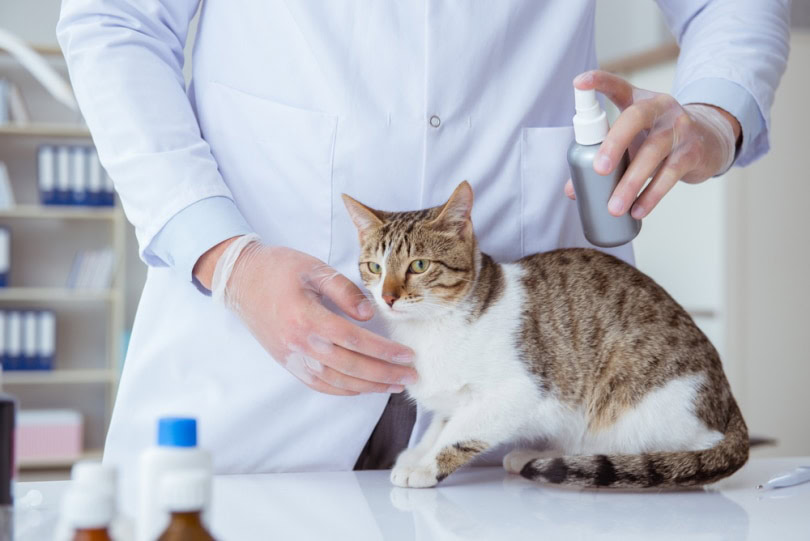
2. Thoroughly Vacuum Your Home
Vacuums are one of the best tools for removing fleas, and you will need one to prepare your home for the bug bomb. As a result of vacuuming, fleas are removed from the floor, and the hidden fleas are awakened, making the fogger more effective. Pay attention to the areas where fleas are most active, such as the cat bed, furniture, and play areas. Vacuuming your home will prepare it for fogging, but it will not solve your flea problem. An adult flea can lay up to 1,000 eggs a week!1
3. Don’t Leave Cat Food, Toys, or Supplies Out
Some people suggest covering toys and supplies with plastic to protect them from the fogger’s chemicals. However, we recommend keeping them in a closet or room away from where the fogger will be. The litter box should be moved outside if the bomb covers the room containing it. You should store all cat bowls and food in the garage or a cabinet. You can cover your furniture and appliances with plastic to minimize cleaning afterward.
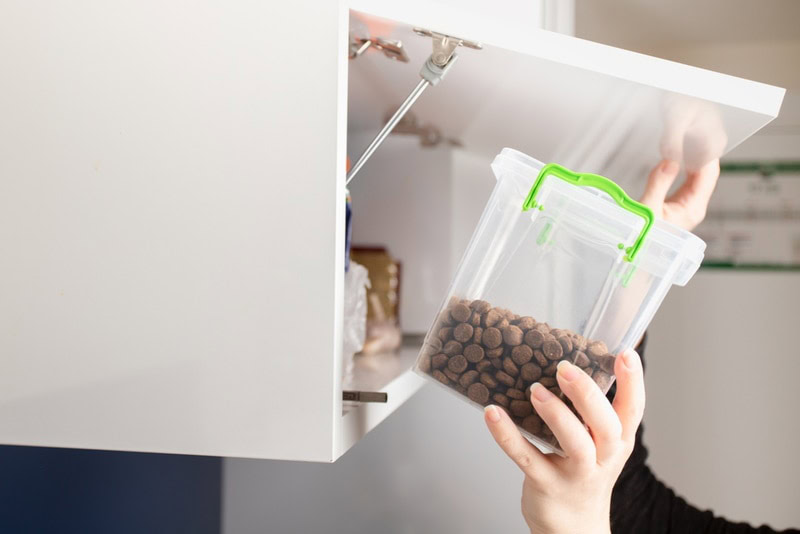
4. Bomb Your Home When It Is Empty
You can determine where to place the fogger after the kids and pets are safely in another location. Remember that you must turn off your gas and pilot lights before using foggers since they emit flammable material. Before setting the bombs, wear a mask and gloves, and place the foggers where you’ve observed the most activity. Once the foggers are activated, leave your home as soon as possible.
Several brands claim that you can enter your home after an hour, but it’s a good idea to wait to bring pets and humans inside until the next day.
5. Air Out and Clean Your Home
You’ll probably smell the chemical fogger when you return. Opening the windows and doors will speed up the process of reducing the smell, but it may take some time. You can also use ceiling fans and air purifiers to reduce the odor. Your home will be covered in a sticky residue from the fogger, so vacuuming is necessary to remove the dead fleas and the residue. Surfaces that were not covered before fogging must be scrubbed with warm, soapy water. The cover of the cat bed should be washed in a machine, and any section that cannot be removed should be hand washed.


Are There Alternatives to Bombing?
You can keep your cat safe from toxic chemicals by thoroughly cleaning your home after using a fogger, but some cat owners are reluctant to use the poison in their households. Although it is more expensive, getting in touch with a pest control expert is the safest, most effective way to deal with a flea infestation.
Using Professional Pest Controllers
Since pet owners represent a significant portion of their clientele, pest control companies offer pet-safe treatments that don’t leave a sticky residue. Flea bombs can only treat the areas in their coverage zones, while pest control technicians can get to crevices, corners, and other hard-to-reach places where fleas hide. A month later, most companies will return to ensure that all the eggs have been eradicated. The duration of the treatment depends on the size of the home.
Flea treatments aren’t cheap, but they’re more effective than foggers at eliminating flea infestations.

Getting Rid of Fleas With DIY Methods
Many DIY formulas for treating fleas can be found online, but you may need to employ several methods to eliminate fleas completely. In addition to vacuuming at least twice a day, you can spray furniture with a homemade spray and use flea lights at night to eliminate the pests.
It is simple and inexpensive to make a homemade flea light. In a shallow container, you need floating candles, water, and dish soap. Pour 2 cups of water and 1 tablespoon of soap into the container. Light the candle in the center of the container. Upon seeing the flickering light, the fleas will jump into the soapy water and drown. A burning candle is a fire hazard, so only use this DIY attractant when you are awake to supervise.
Regardless of the DIY method you use, you’ll probably have to vacuum, spray, and clean for weeks until every flea and egg dies. It’s a lot more efficient to call a pest controller.

Conclusion
In addition to irritating your pets, fleas spread diseases, but they’re not invulnerable to flea bombs. Foggers can greatly reduce the flea population in your home, but they don’t always get every flea the first time. If the chemical did not kill the hidden larvae or eggs, you might have to repeat the treatment.
It is possible to reduce the number of fleas in your home if the infestation is not too bad by applying topical flea prevention to your cat’s coat every 30 days. You may need to contact a professional to rid your home of pests if your foggers and DIY techniques do not work. Treatment of your lawn may also be necessary.
Featured Image Credit: Michelangelo Buonarroti, Pexels
